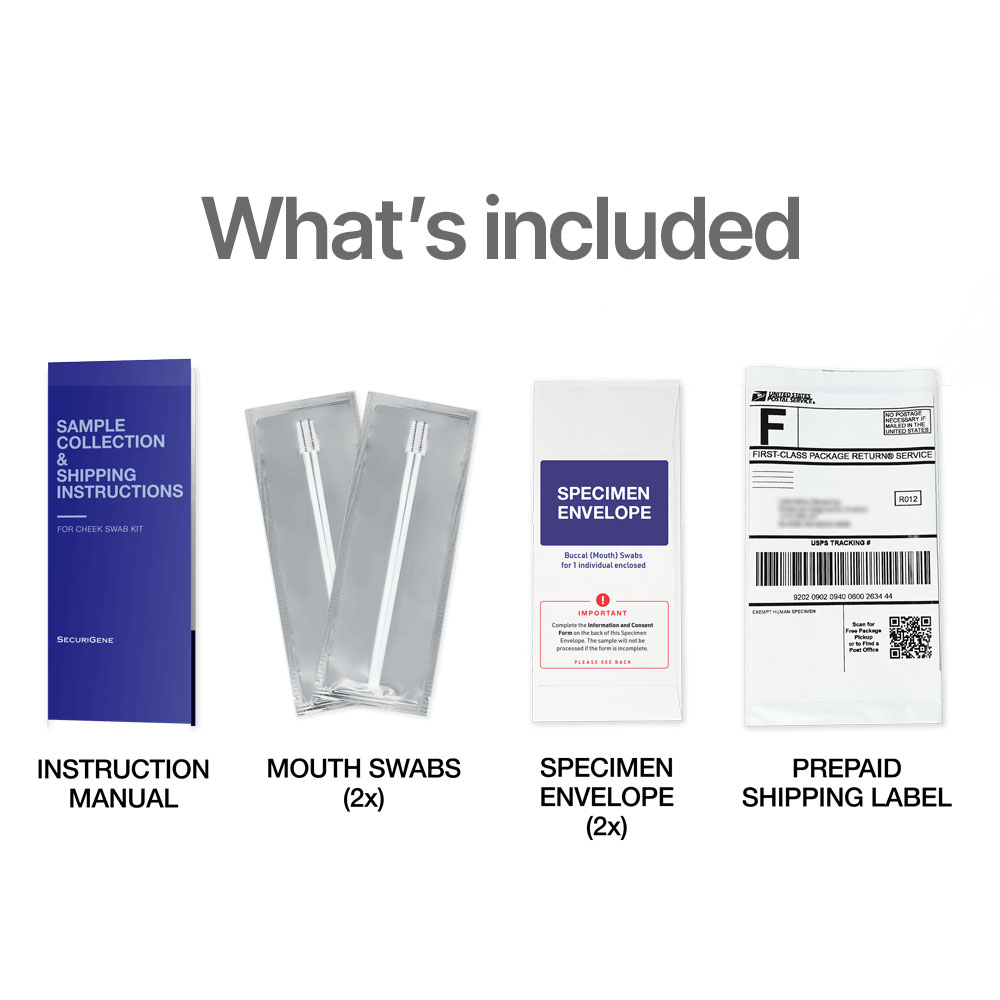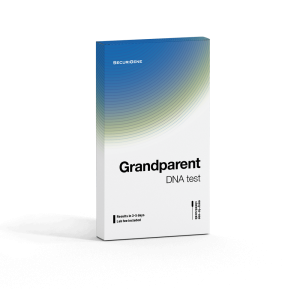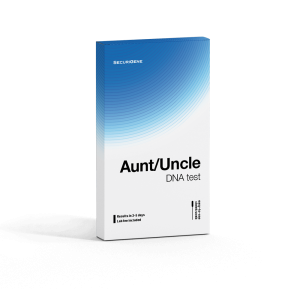Use Sanger Sequencing and Fragment Analysis to learn about your maternal or paternal roots.
Use the family finder feature in FamilyVault to potentially view and connect with matched relatives.
Trace your migration pattern of your ancient ancestors from thousands of years ago to today.
Trace your maternal ancestry.

Your mtDNA is your link back to all of your maternal ancestors. It is passed down unchanged from mother to child and is the only way to accurately trace your maternal ancestry.
Your mtDNA genome contains 16,569 base pairs. That is 16,569 different places that a change can occur! DNA SNP chips (used by many of our competitors) detect less than 20% of all these possible changes. We use Sanger Sequencing (the GOLD standard for DNA sequencing) to identify every single base pair. If you carry a mtDNA genetic variant, our technology will detect it.
The mtDNA genome contains three regions: two hypervariable regions (HVR1 and HVR2) and the more conserved coding region:
Sequence just one or both of your hypervariable regions so that you can accurately compare your mtDNA to published data from hundreds of famous historical figures and ethnic groups around the world. DNA SNP chips struggle to detect all the variation in the hypervariable regions, but our Sanger Sequencing technology will identify every single change.
Both males and females have mtDNA, so both genders can take the mtDNA test to trace their maternal ancestry. However, only females will pass their mtDNA down to the next generation.
Features:
- Define your maternal ethnic background
- Understand your maternal origins
- Search a global database for long-lost relatives on your maternal line
- Compare your mtDNA against famous people throughout history, including famous and infamous individuals, royalty, outlaws, world leaders, poets, and more
- Painless buccal (mouth) swab sample collection
- All tests are run 2x for absolute accuracy
- Quickly collect samples in the privacy of your own home
- 24/7 online test status check
- No age limit
- State-of-the-art accredited testing laboratory
What is mtDNA?
Mitochondrial DNA (mtDNA) is the circular DNA which is found in the mitochondria of human cells. Each cell can contain several mitochondria and each mitochondrion contains dozens of copies of the 16,569 base pairs of mtDNA so in every cell there can be thousands of copies of mtDNA. This differs from only two copies per cell of the linear and much larger nuclear genome of 3.3 billion base pairs, which includes the autosomal and sex chromosomes. Each individual inherits mtDNA from only their mother, hence there is no recombination (mixing) of the mtDNA from generation to generation. This ensures that mtDNA essentially remains unchanged through the maternal line, providing an incredibly useful way to trace maternal ancestry
What is mtDNA sequencing?
The circular mitochondrial genome has three regions – two small hypervariable (HVR) regions and a large coding region. Most of the variation in the mtDNA occurs in the non-coding HVR regions, as this variation does not affect the function of any proteins etc. The mtDNA sequencing available here can sequence just the HVR1 region, both hypervariable regions (HVR1 and HVR2) or the complete mitochondrial genome (HVR1, HVR2 and the coding region). If two individuals have a perfect match at their HVR1 and HVR2 regions, further comparison of the much larger coding region can provide a higher stringency comparison and further resolution. The coding region covers the remainder of the mitochondrial genome and the complete mitochondrial genome is 16,569 base pairs.
Methods and analysis of mtDNA sequencing:
The mtDNA sequencing analysis uses a technique called Sanger sequencing to determine the DNA sequence in the specified region of the mtDNA. The entire DNA sequence for each region tested is provided to you in your mtDNA test report. If you choose to test all three regions (HVR1, HVR2 and coding region), you will receive a reading on all 16,569 base pairs of your mtDNA. If only one or both hypervariable regions are sequenced, a shorter reading will be provided. Your mtDNA sequencing results are also compared to a reference sequence called “rCRS” (revised Cambridge Reference Sequence) and all of the positions within your mtDNA which differ from rCRS are listed in your report.
Your unique mtDNA sequence result is known as your mtDNA profile. Individuals share the same mtDNA profile if their mtDNA sequences are an exact match to each other. Since mtDNA is passed down from mother to child along the direct maternal lineage, individuals who have descended from the same maternal lineage are expected to have exactly the same or very similar mtDNA profiles. If two individuals have different mtDNA profiles, it would conclusively confirm that they did not descend from the same maternal lineage, regardless of family legend.
Trace your maternal ancestry.

Your mtDNA is your link back to all of your maternal ancestors. It is passed down unchanged from mother to child and is the only way to accurately trace your maternal ancestry.
Your mtDNA genome contains 16,569 base pairs. That is 16,569 different places that a change can occur! DNA SNP chips (used by many of our competitors) detect less than 20% of all these possible changes. We use Sanger Sequencing (the GOLD standard for DNA sequencing) to identify every single base pair. If you carry a mtDNA genetic variant, our technology will detect it.
The mtDNA genome contains three regions: two hypervariable regions (HVR1 and HVR2) and the more conserved coding region:
Sequence just one or both of your hypervariable regions so that you can accurately compare your mtDNA to published data from hundreds of famous historical figures and ethnic groups around the world. DNA SNP chips struggle to detect all the variation in the hypervariable regions, but our Sanger Sequencing technology will identify every single change.
Both males and females have mtDNA, so both genders can take the mtDNA test to trace their maternal ancestry. However, only females will pass their mtDNA down to the next generation.
Features:
- Define your maternal ethnic background
- Understand your maternal origins
- Search a global database for long-lost relatives on your maternal line
- Compare your mtDNA against famous people throughout history, including famous and infamous individuals, royalty, outlaws, world leaders, poets, and more
- Painless buccal (mouth) swab sample collection
- All tests are run 2x for absolute accuracy
- Quickly collect samples in the privacy of your own home
- 24/7 online test status check
- No age limit
- State-of-the-art accredited testing laboratory
What is mtDNA?
Mitochondrial DNA (mtDNA) is the circular DNA which is found in the mitochondria of human cells. Each cell can contain several mitochondria and each mitochondrion contains dozens of copies of the 16,569 base pairs of mtDNA so in every cell there can be thousands of copies of mtDNA. This differs from only two copies per cell of the linear and much larger nuclear genome of 3.3 billion base pairs, which includes the autosomal and sex chromosomes. Each individual inherits mtDNA from only their mother, hence there is no recombination (mixing) of the mtDNA from generation to generation. This ensures that mtDNA essentially remains unchanged through the maternal line, providing an incredibly useful way to trace maternal ancestry
What is mtDNA sequencing?
The circular mitochondrial genome has three regions – two small hypervariable (HVR) regions and a large coding region. Most of the variation in the mtDNA occurs in the non-coding HVR regions, as this variation does not affect the function of any proteins etc. The mtDNA sequencing available here can sequence just the HVR1 region, both hypervariable regions (HVR1 and HVR2) or the complete mitochondrial genome (HVR1, HVR2 and the coding region). If two individuals have a perfect match at their HVR1 and HVR2 regions, further comparison of the much larger coding region can provide a higher stringency comparison and further resolution. The coding region covers the remainder of the mitochondrial genome and the complete mitochondrial genome is 16,569 base pairs.
Methods and analysis of mtDNA sequencing:
The mtDNA sequencing analysis uses a technique called Sanger sequencing to determine the DNA sequence in the specified region of the mtDNA. The entire DNA sequence for each region tested is provided to you in your mtDNA test report. If you choose to test all three regions (HVR1, HVR2 and coding region), you will receive a reading on all 16,569 base pairs of your mtDNA. If only one or both hypervariable regions are sequenced, a shorter reading will be provided. Your mtDNA sequencing results are also compared to a reference sequence called “rCRS” (revised Cambridge Reference Sequence) and all of the positions within your mtDNA which differ from rCRS are listed in your report.
Your unique mtDNA sequence result is known as your mtDNA profile. Individuals share the same mtDNA profile if their mtDNA sequences are an exact match to each other. Since mtDNA is passed down from mother to child along the direct maternal lineage, individuals who have descended from the same maternal lineage are expected to have exactly the same or very similar mtDNA profiles. If two individuals have different mtDNA profiles, it would conclusively confirm that they did not descend from the same maternal lineage, regardless of family legend.
Simple sample collection
Each kit contains painless, easy-to-use mouth swabs that are used to collect your DNA.
Quality Assured
All testing is performed in our ISO 17025, AABB and CLIA certified laboratory.

Easily get results
Get 24/7 access to your results from your secure online account within days after testing begins.

Private & confidential
Your data belongs to you. We do not share your data with any third party without your permission.
How it works

Choose one or more Ancestry Test: Maternal Ancestry (males and females) or Paternal Ancestry (males only)

Your test kit includes everything you need to collect painless mouth swab samples in the privacy of your own home.
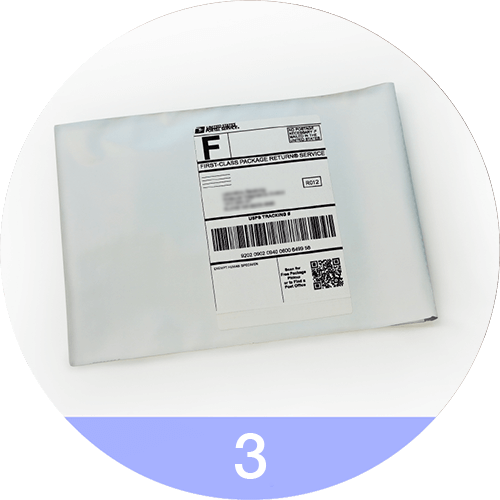
When you’re finished collecting your DNA samples, simply mail them to the lab using the prepaid shipping envelope.
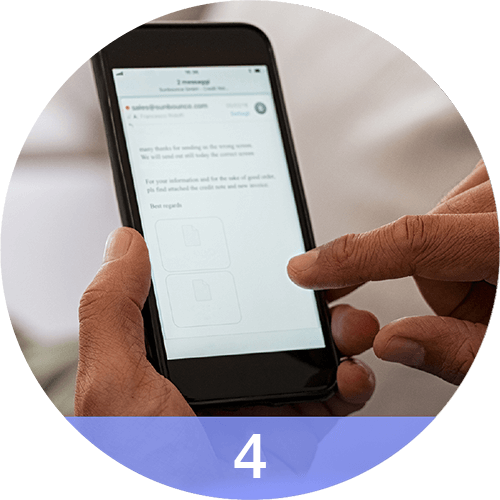
Receive confidential results in your secure online portal with free lifetime access to FamilyVault.
FAQ
Here are the answers to the most frequently asked questions about this test.
DNA is collected by rubbing a brush gently inside the mouth against the cheek for 30 seconds. The collection is safe and painless.
Please note: Ancestry testing can be done using forensic samples. To learn more about forensic sample types, please click here.
Mitochondrial DNA (mtDNA) is DNA that is found in the mitochondria of cells. Both males and females have mtDNA so both males and females can take the mtDNA test.
mtDNA is passed down strictly from mother to child along the direct maternal line. The matrilineal inheritance pattern of mtDNA means that all people who descended from the same matrilineal ancestral lineage will have exactly the same mtDNA profile. mtDNA testing allows you to trace the ancestry of your direct maternal lineage (your mother’s, mother’s, mother’s… maternal lineage). Using your mtDNA results, you can find out whether you are linked to any other individual along your direct maternal line; you can search a global database to seek potential long lost maternal line relatives from around the world; and you can find out which ancient mtDNA Haplogroup you belong to.
Our mtDNA tests using Sanger Sequencing to analyze your mtDNA. Different regions of the mtDNA genome can be sequenced.
The entire DNA sequences for regions tested are provided to you in your mtDNA test report. Your mtDNA sequencing results are compared to a reference sequence called the “rCRS” (revised Cambridge Reference Sequence), and all of the positions within your mtDNA, which differ from rCRS are listed in your report.
Yes, both males and females have mtDNA, so both genders can take the mtDNA test to trace their maternal ancestry. However, only females will pass their mtDNA down to the next generation.
Using mtDNA sequencing and/or Y-DNA results, any two individuals can compare their profiles to see whether they descended from the same maternal line (for mtDNA) or paternal line (for Y-DNA). If the tests show that two individuals have different mtDNA and Y-DNA profiles, it would conclusively prove that they did not descend from the same maternal and paternal lineages.
You can use your mtDNA and Y-DNA profiles to compare with other individuals in your tree to confirm a positive linkage, verify new linkages, or verify findings from your paper research. You can also use your mtDNA and Y-DNA markers to search our global database to find potential matches from around the world. Free lifetime access to the database is included.
Mitochondrial DNA (mtDNA) and Y DNA are two different types of DNA that are present in different parts of a cell. Mitochondrial DNA is a small circular DNA molecule located in the mitochondria of a cell, which is the site of cellular respiration. mtDNA is passed down from a mother to her offspring and is used to trace maternal ancestry.
Y DNA, on the other hand, is present in the nucleus of a cell and is part of the larger genome. It is passed down exclusively from father to son, and is used to trace paternal ancestry. Y DNA is unique to males, as it is located on the Y chromosome, which is only found in males.
This is why only biological males can do Y DNA or Paternal Ancestry testing.
Yes, your results are 100% confidential. No one will be able to access your account or your results unless you give them your confidential account login. You can change the password to your account at any time. Please remember to safeguard your login information and not share it with anyone.
When you activate your DNA Ancestry test kit online, you will have access to your secure online portal. You can check test status and download your DNA Ancestry test results as soon as they are ready. You may also navigate through the Ancestry Database directly from this portal.

